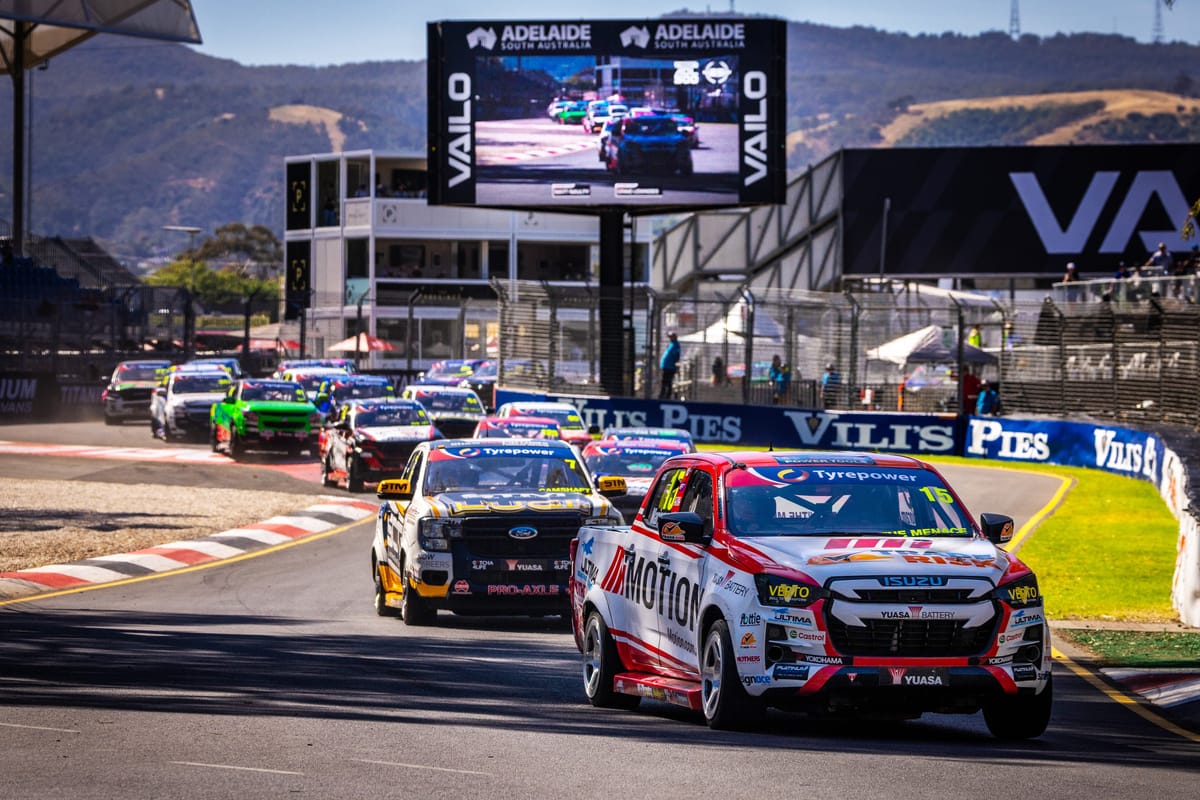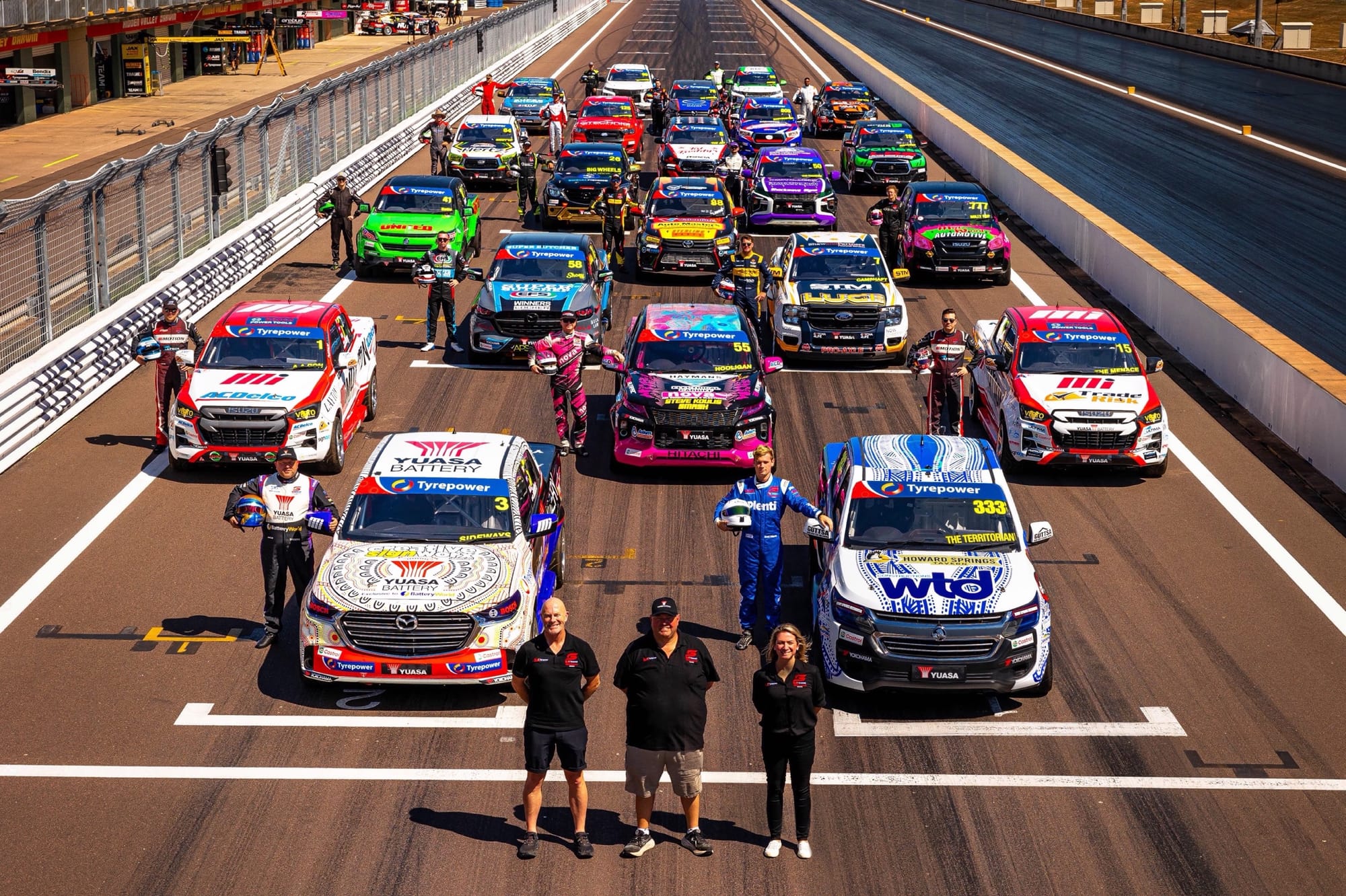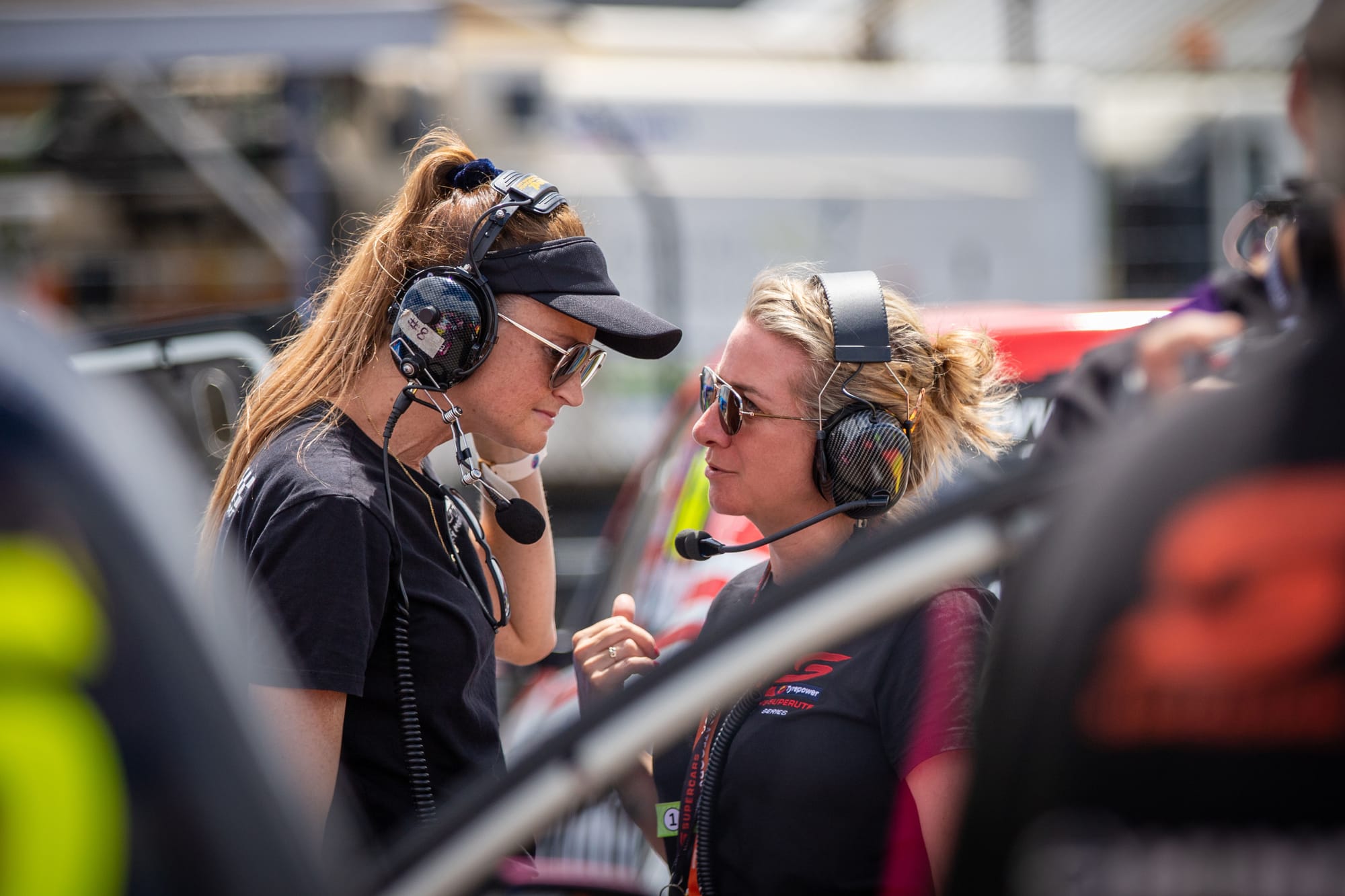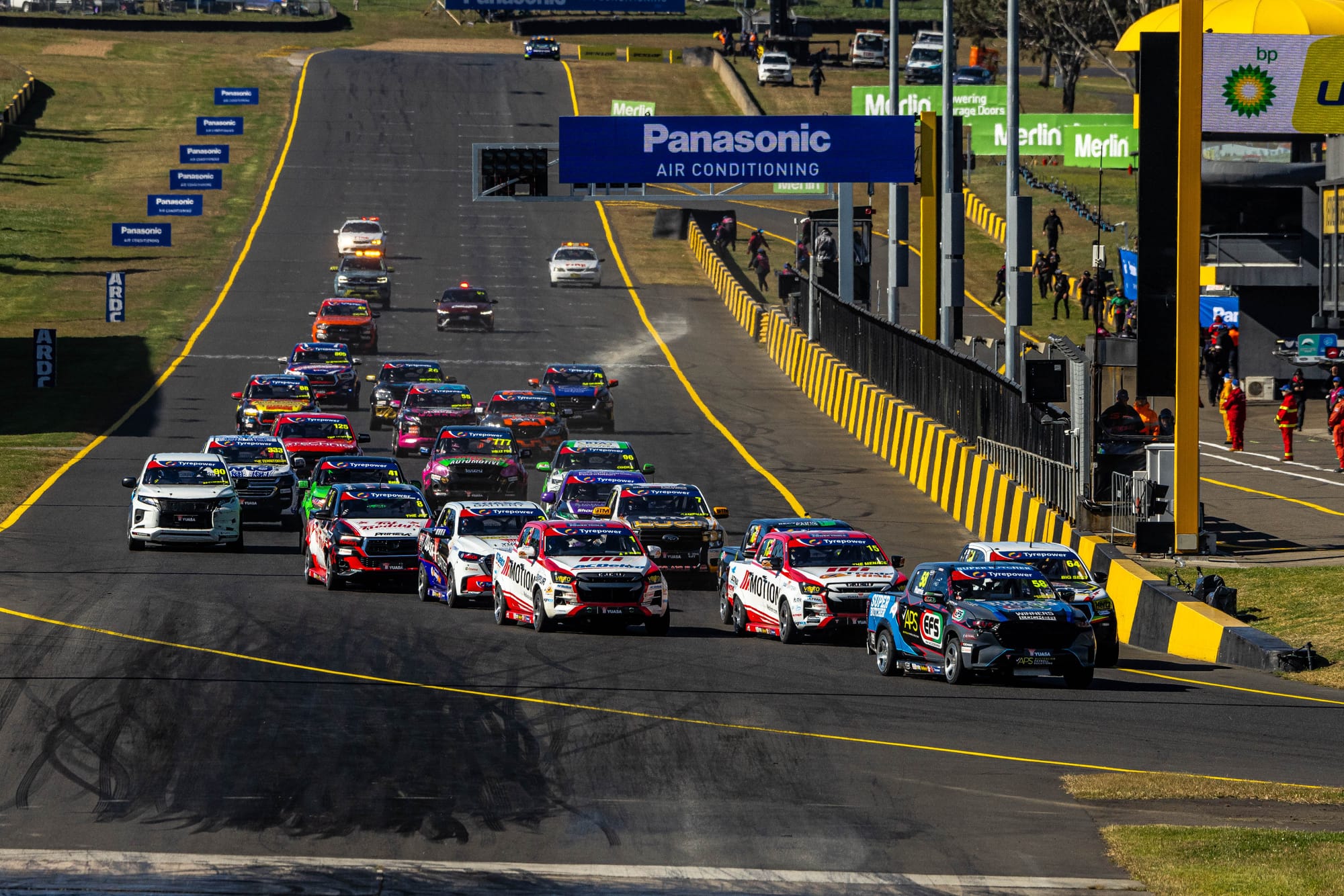PUTTING THE BRUTE BACK INTO UTES

The brawling V8 battlers of the SuperUte series are finally back to their best.
After a tough start to the second-generation competition, with unpopular diesel engines, the latest duel-cab workhorses are now firing on all eight cylinders with a full grid of aggressive contenders.
It's proof, once again, that a second attempt is always worth a shot.
A full grid of 24 utes at the Adelaide 500, with six different badges, was the culmination of a turnaround that began when a miserable 10 starters fronted for the same event in 2018.
But there is some history that needs addressing before focussing on the emerging success of the current-generation SuperUte.
The idea of utes racing at Australian tracks dates back to 2000. Originally known as the V8 BRute Utes, the category was spun-out of the PROCAR Series then owned by Ross Palmer – big-money one-time backer of Dick Johnson – and was created for Ford Falcons and Holden Commodores.
Its original management team was Palmer, V8 Ute patron Ian McAlister and PROCAR mover and shaker, Craig Denyer, and the series was launched – ironically – at the Clipsal Adelaide 500 in March of 2001.
The series struck a chord with punters as a fun, irreverent and aggressive style of racing with larger-than-life characters, many who would not have survived in a professional environment such as Super2 or a current GT category.
It helped that the drivers all had nicknames, including 'Mad Dog', 'Redline', 'Ice' and 'Handlebars'.
But Australia's utes were heading into the history book as local manufacturing shut down and, after 17 years, the Falcon-versus-Commodore series was dead.

New thinking focussed on a dual-cab, diesel-powered category for the next generation of utes, including the Ford Ranger, Isuzu D-Max and Mazda BT50.
But there were just 10 takers for the SuperUte category at the 2018 Adelaide 500 and it wasn’t long until category management and the series owners at Supercars realised they had a big problem.
The series drew widespread criticism of small grids, strange diesel engine noise, questionable reliability, the ungainly look of the utes, which often crashed and sometimes finished upside-down.
It was no surprise when the utes were parked and the series was put on the back burner after just two years.
The announcement of a total re-packaging, including V8 Chevrolet 'crate' engines and lowering the utes with bigger wheels to give a much tougher stance, was a sound strategy direction but the category still had to wait two years before it could re-emerge.
New thinking, new people and a totally reinvigorated SuperUte series re-launched at The Bend in 2021.
One of the key changes behind the scenes was the appointment of Filippa Guarna as operations and communications manager to team-up with category manager Luke Seiders. Having spent years in media and public relations in Australia, and then working in the Middle East as the Formula4 UAE communications manager, she was a perfect choice for the role.
“There was agreement across the board at Supercars that the diesel formula was not working," said Guarna. “The diesel era was the first two seasons in 2018 and '19, and Covid actually allowed category manager Luke Seiders to regroup and oversee the conversion to the V8 engine."
From there, Seiders and a core group undertook the development program for the V8 conversion and build of a prototype.
“I came along about a year and half of the V8 SuperUte era in May 2022,” Guarna recalled. “I said to Luke that I would love to check it out having returned from the Middle East, and I was so impressed with the passion and the camaraderie of the competitors. The product was there – the V8 SuperUtes with the LS3 engines, the tyre package, all had great foundations – and it just needed a bit of a wheel alignment."

There were still plenty of naysayers and negativity from the Diesel era, but Guarna stressed she would not have given 110 per cent if she could not see light at the end of the tunnel.
“I was excited about putting some of the old V8 Utes spark back into SuperUtes. Bringing back the nicknames and the door-to-door racing were all part of the things we wanted to bring back from the V8 Utes.”
Like all categories on the main motorsport calendars in Australia, the question of relevance and pathways is often the topic of debate. But, by running on Supercars undercard, it does offer exposure for drivers seeking to move up the food chain. And it is relatively cost effective.
“The grid is actually mixed with various motivations for the drivers. But many are looking for a pathway to progress,” Guarana said.
“It’s affordable for these guys to come and spend $150,000 to $200,000 and get great bang-for-buck and excellent Television coverage. We sort of see ourselves between the Toyota 86 Series and Super 2."

Commercial interest appears to have been ignited as the success of the class grows, with Guarna hinting that a seventh brand could join the grid in 2025. While not a fully-fledged factory team, she can see that support from dealer networks is growing, even to the point of young workshop apprentices working with the teams on race weekends.
After hard and entertaining racing at the 2024 finale, the 2025 Super Utes six-round calendar brings new states and tracks in five states across the country including Tasmania and Western Australia.
“The series has always been open to mixing-up its calendar to reach new fans and partners and the teams and drivers are excited to go back to tracks we haven’t raced at in a long time,” said Guarna.
“This year was a standout season on track with awesome racing, great rivalries and a title that came down to the final race in Adelaide. We can’t wait to build on that momentum with new ideas and initiatives to be rolled out both online and at events in 2025, and we appreciate the ongoing support of Supercars in being able to do so."

